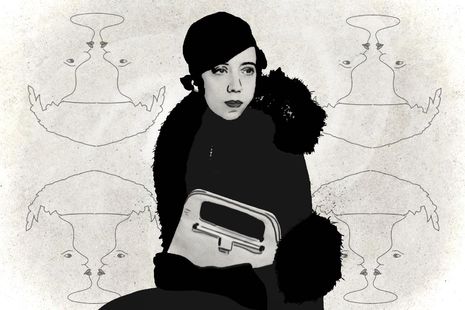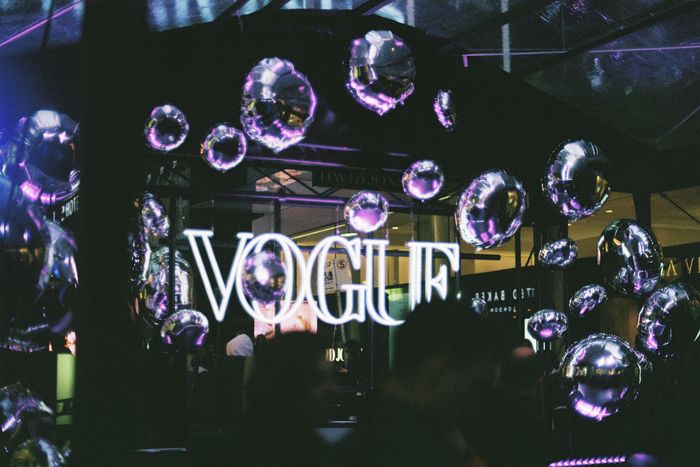Elsa Schiaparelli: Creating more than just pretty
Freya Beard takes an in depth look at the ingenious surrealism of Elsa Schiaparelli’s whimsical designs

When Elsa Schiaparelli was a young girl, she planted seeds in her ears in the hopes they would germinate in the warmth of her body heat and sprout flowers that would grow to obscure her face. She had never been self-assured by her physical appearance, an insecurity compounded by cruel comments from her mother. This vision of being shrouded in flora was the fledglings of a whimsical imagination that would go on to revolutionise fashion of the mid-20th century.
In recent decades, fashion innovation has gestured to a further intertwining of art and fashion, with designers such as Alexander McQueen and, in more recent years, Iris Van Herpen, having pioneered avant-garde forms of fashion, creating otherworldly structures that transcend the description of mere clothes on the body. Yet Schiaparelli was one of the first designers to practice the idea that fashion and art could - and should - intertwine.
“Schiaparelli [...] practiced the idea that fashion and art could intertwine”
During their prolonged vitriolic feud, Coco Chanel gave Schiaparelli the moniker ‘the Italian artist who makes clothes’, jibing at Elsa’s lack of formal sartorial training while also suggesting that Schiaparelli’s artistic influence rendered her a bootleg fashion designer. The artistic influence Chanel regarded with such derision was Schiaparelli’s professional relationship with surrealist painter Salvador Dali. The pair collaborated on a multitude of projects, from celestial inspired perfume bottles to a hat that masqueraded as a high heel hat.
In her lifetime, Schiaparelli’s designs encouraged the fashion-forward woman of the 1940s and 50s to don oversized beetle brooches, jackets and dresses emblazoned with star signs, and cornucopias of fruit woven in gold thread. The Lobster dress created by Schiaparelli in 1937, in the early stages of her career, was instrumental in asserting this new form of art-cum-fashion. A white silk evening dress with a red lobster hand painted by Dali onto the skirt, it was an extension of the recurring use of a lobster motif in Dali’s surrealist art.
“It may charm, frustrate or irritate with its flamboyance”
The garishness of the design encapsulated Schiaparelli’s iconoclastic approach to fashion, representing her desire to create more than just a pretty garment. Some may think the dress ugly - I for one am not sure how to feel, and this ambivalence gives way to a part of myself that thinks I’m unsure because there is some artistic intel required to like the dress, that I’m not privy to. Both dress and wearer flirt with their audience in this way, smugly withholding context that the observer is crying out for. It elicits a response that is multifarious: it may charm, frustrate or irritate with its flamboyance.
In the following year, the creation of the Skeleton dress showcased Schiaparelli’s skill in creating surrealist designs that teetered on the precipice between everyday practicality and arresting surrealism. The dress was made from silk crepe, constructed using an exaggerated trapunto quilting technique to create a ribcage in the material, forming an exoskeleton over the dress. The macabre dress came to fruition when Dali wrote to Schiaparelli, ‘Dear Elsa, I like the idea of the bones on the outside’.
In an age in which the new ‘fashionable’ feminine silhouettes were being pioneered and refined by Coco Chanel, the Skeleton dress struck another dissonant chord, this time for its macabre motif. I would argue that Schiaparelli’s attention to the wearability of her garments creates a more deeply resonant sense of the surreal than other surrealist-inspired pieces that have come about since then. The Moschino A/W22 show was sharply infused with the surreal, with several models walking down the runway as reincarnations of Beauty and the Beast’s animated homewares. While the collection hits a campy sweet spot with its whimsically impractical looks, it provides escapism in the purest sense by constructing a visual world divorced from reality with deliciously impractical outfits.
Through the Skeleton dress, Schiaparelli channels a desire for the surreal to infiltrate the mundane, to mesmerise, but also to perturb the observer by fusing the two realms. The charcoal hue of the fabric, coupled with its quirky style, does not provide escapism as much as the observer finds their own mortality gazing back at them. As Schiaparelli externalised and exposed the human skeleton in her design, the dress began to resonate with the sense of human vulnerability that the era of the Great Depression magnified.
These two early Schiaparelli designs showcase a vision for fashion that expects more from the observer than to merely delight them. She serves to upend their relationship with fashion; withholding, teasing but also revealing through her designs.
 News / Uni offers students £55k in payouts31 October 2025
News / Uni offers students £55k in payouts31 October 2025 News / Uni error forces deeper spending cuts31 October 2025
News / Uni error forces deeper spending cuts31 October 2025 News / Students launch women’s society excluding trans women31 October 2025
News / Students launch women’s society excluding trans women31 October 2025 News / Students allowed to use AI, says new uni guidance31 October 2025
News / Students allowed to use AI, says new uni guidance31 October 2025 News / College rowing captains narrowly vote to exclude trans women31 October 2025
News / College rowing captains narrowly vote to exclude trans women31 October 2025










